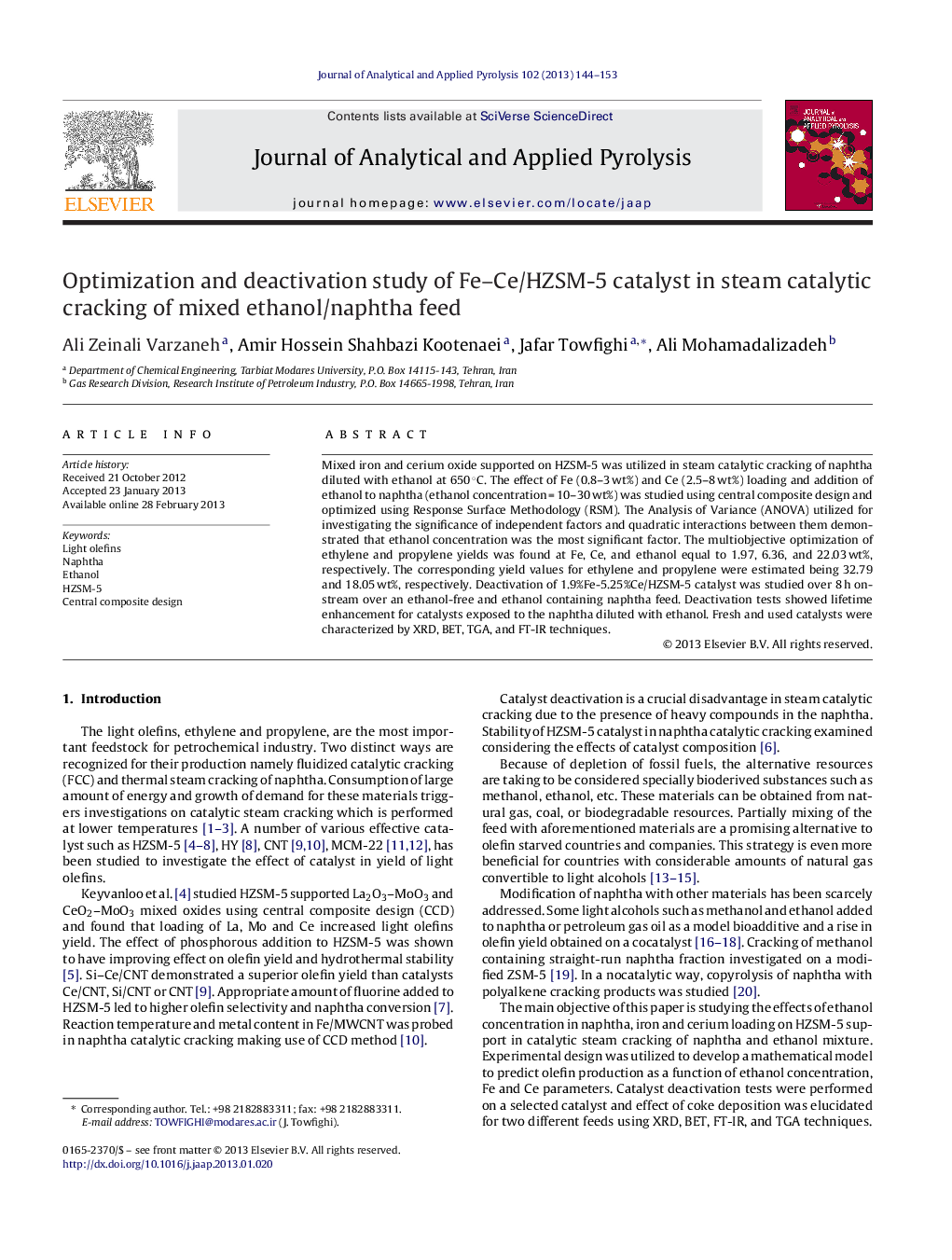| Article ID | Journal | Published Year | Pages | File Type |
|---|---|---|---|---|
| 1196899 | Journal of Analytical and Applied Pyrolysis | 2013 | 10 Pages |
Mixed iron and cerium oxide supported on HZSM-5 was utilized in steam catalytic cracking of naphtha diluted with ethanol at 650 °C. The effect of Fe (0.8–3 wt%) and Ce (2.5–8 wt%) loading and addition of ethanol to naphtha (ethanol concentration = 10–30 wt%) was studied using central composite design and optimized using Response Surface Methodology (RSM). The Analysis of Variance (ANOVA) utilized for investigating the significance of independent factors and quadratic interactions between them demonstrated that ethanol concentration was the most significant factor. The multiobjective optimization of ethylene and propylene yields was found at Fe, Ce, and ethanol equal to 1.97, 6.36, and 22.03 wt%, respectively. The corresponding yield values for ethylene and propylene were estimated being 32.79 and 18.05 wt%, respectively. Deactivation of 1.9%Fe-5.25%Ce/HZSM-5 catalyst was studied over 8 h on-stream over an ethanol-free and ethanol containing naphtha feed. Deactivation tests showed lifetime enhancement for catalysts exposed to the naphtha diluted with ethanol. Fresh and used catalysts were characterized by XRD, BET, TGA, and FT-IR techniques.
► Mixed Fe–Ce oxide supported on ZSM-5 was used in catalytic cracking of mixed ethanol/naphtha for light olefins production. ► A new model generated to estimate the yield of ethylene and propylene considering the interactions of the parameters. ► Optimizing of Fe, Ce loading and ethanol concentration in naphtha was performed. ► The effect of ethanol concentration in naphtha in deactivation of a selected catalyst was investigated.
